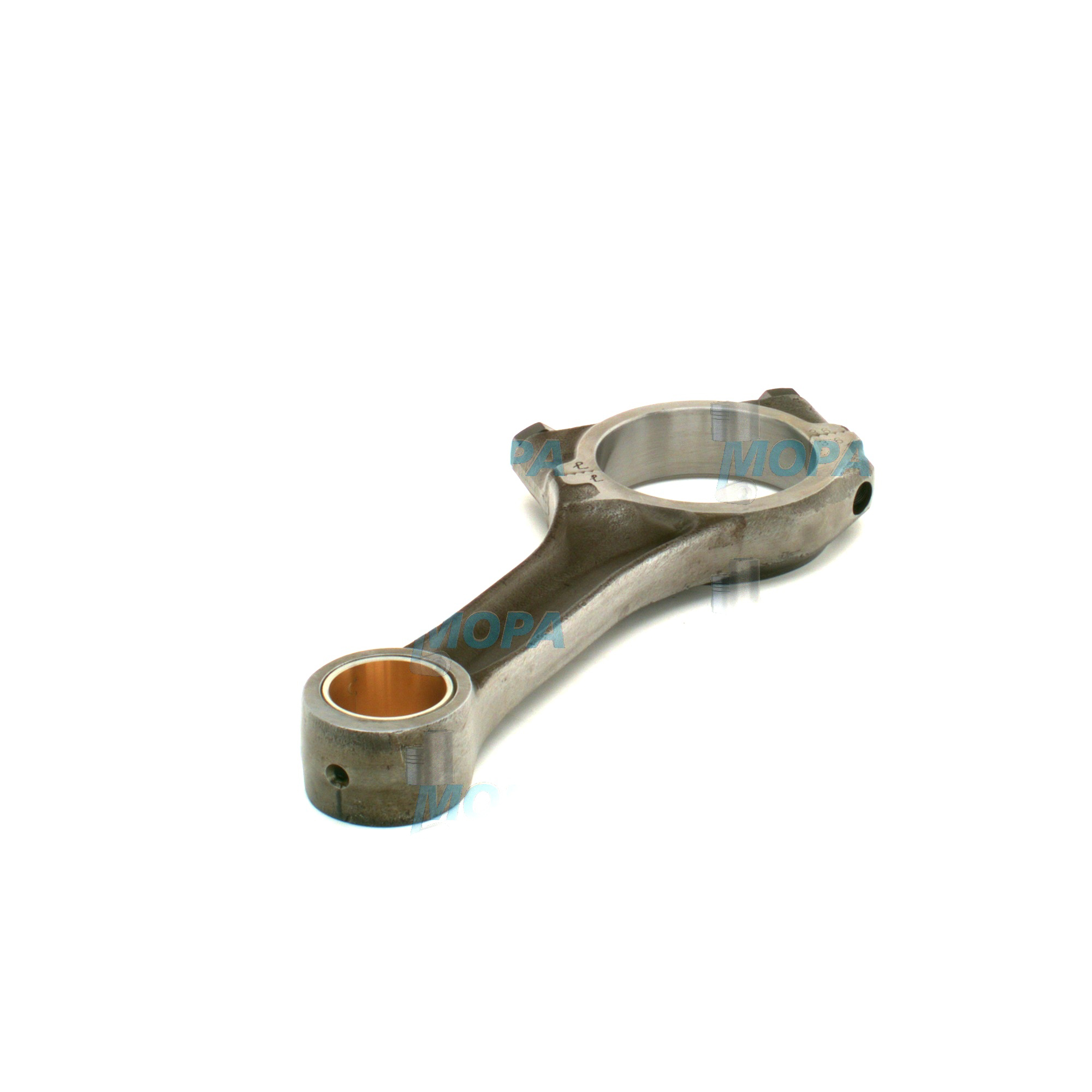CONNECTING ROD recondit. Engine drive components for marine and diesel engines
Engine drive components form the mechanical backbone that transfers combustion energy into usable shaft power. In large marine engines, industrial gensets, and heavy-duty diesel engines, this category covers the complete force path from piston to propeller or generator: connecting rods, crankshafts, main and big-end bearings, piston pins, flywheels, torsional vibration dampers, gear trains, and couplings. Together, these parts convert reciprocating motion to rotation, keep the rotating assembly aligned and balanced, and protect the engine against mechanical overload and vibration. For shipowners and operators, robust engine drive components mean dependable propulsion, predictable maintenance cycles, and controlled lifecycle costs.
Engine drive components: technical function in diesel engine and marine engine powertrains
The function of engine drive components is to transmit immense cyclic loads with precision and minimal losses. In a four-stroke diesel engine, combustion forces push the piston down; the piston pin and small-end bushing pass the load into the connecting rod, which translates the linear force into torque at the crankshaft via the big-end bearings. The crankshaft then delivers smooth rotational energy to the flywheel and shaft line, damped by a torsional vibration damper and supported by properly lubricated main bearings. In two-stroke marine engine architectures, the same principles apply at larger scale and lower speeds, where hydrodynamic bearing films, surface finishes, and clearances become even more critical.
Within this chain, the connecting rod is a high-stress link that must maintain geometry under fatigue loading. Processes such as CONNECTING ROD recondit. marine engine and CONNECTING ROD recondit. diesel engine help restore dimensional accuracy of big-end bores and small-end bushings, ensure correct center-to-center length, and re-establish bearing crush and contact patterns. When combined with calibrated OEM parts—bolts, nuts, bearing shells, and bushings—the rotating assembly maintains oil film integrity, correct preload, and repeatable performance over long service intervals.
CONNECTING ROD recondit. in OEM parts context
For fleets standardizing on specific engine series, CONNECTING ROD recondit. OEM parts provide a controlled route to keep rods, bearings, and fasteners within the design window. Precision machining, magnaflux inspection, bolt stretch control, and big-end resizing are paired with specification-matched shells and fasteners to preserve bearing eccentricity, oil wedge formation, and fatigue margins—key to efficiency and safety in continuous duty.
- · High load capacity under continuous duty and peak firing pressures.
- · Tight tolerances for bores, journals, and center distances.
- · Optimized oil supply channels for stable hydrodynamic films.
- · Correct material hardness and surface finish to resist wear and scuffing.
- · Rigorous balancing to reduce vibration and bearing stress.
- · Robust fasteners with controlled preload for joint integrity.
- · Torsional damping to protect the cranktrain and couplings.
- · Traceability and documentation to support planned overhauls.
Why engine drive components are critical for reliable operation and service life
Reliability starts with geometry and surface integrity. If clearances drift or surfaces degrade, bearing films collapse, friction rises, and temperatures climb. Worn big-end or main bearings can lead to journal scoring, metal pick-up, and oil pressure instability. Elongated small-end bushings alter piston motion, increasing skirt loads and liner wear. Out-of-balance rotating assemblies transfer vibration through the hull or foundation, accelerating fatigue in ancillary systems. In extreme cases, bolt relaxation or cracked connecting rods can cause catastrophic failures, unplanned off-hire, and costly dry-dock events. By keeping engine drive components within specification, operators safeguard efficiency, emissions compliance, and crew safety while extending overhaul intervals.
Advantages of OEM spare parts suitable for engine drive components
Matching the design intent of the engine maker is essential for the cranktrain. OEM spare parts suitable for engine drive components—connecting rods, bearing shells, rod bolts, main bearings, piston pins, vibration dampers, and couplings—arrive with defined materials, heat treatments, surface profiles, and tolerances. This consistency protects oil film dynamics and prevents geometry stack-up across the assembly. For planned maintenance, it means predictable outcomes and shorter return-to-service.
In practice, pairing precise machining with specification-correct parts preserves torque capacity, reduces frictional losses, and stabilizes temperatures. For procurement teams, it also streamlines approvals and documentation, simplifies inventory across engine series, and minimizes the risk of rework. Whether during class renewal or voyage repairs, the result is dependable performance and longer service life at a controlled total cost of ownership.
MOPA: your partner for OEM parts in engine drive components
MOPA is an experienced and reliable partner for OEM spare parts suitable for engine drive components. We combine speed of delivery with stringent quality controls and supply chain security—crucial for diesel and gas engines operating on tight schedules. From CONNECTING ROD recondit. marine engine projects to full cranktrain overhauls, our team supports technical identification, documentation, and logistics so your vessel or plant returns to service quickly.
With a focused range covering connecting rods, crankshafts, bearing sets, piston pins, rod bolts, vibration dampers, and couplings, MOPA helps purchasers and technical managers source correctly the first time. Our process emphasizes dimensional compliance, material pedigree, and packaging integrity, reducing installation risks and helping you maintain consistent engine performance across your fleet.
Conclusion: engine drive components and OEM spare parts
Engine drive components are the core of power transmission in any diesel or gas engine, and their condition defines performance, efficiency, and operational safety. By combining sound maintenance practices—such as CONNECTING ROD recondit. diesel engine procedures—with OEM spare parts suitable for this category, operators protect uptime and extend service life while maintaining predictable budgets.


